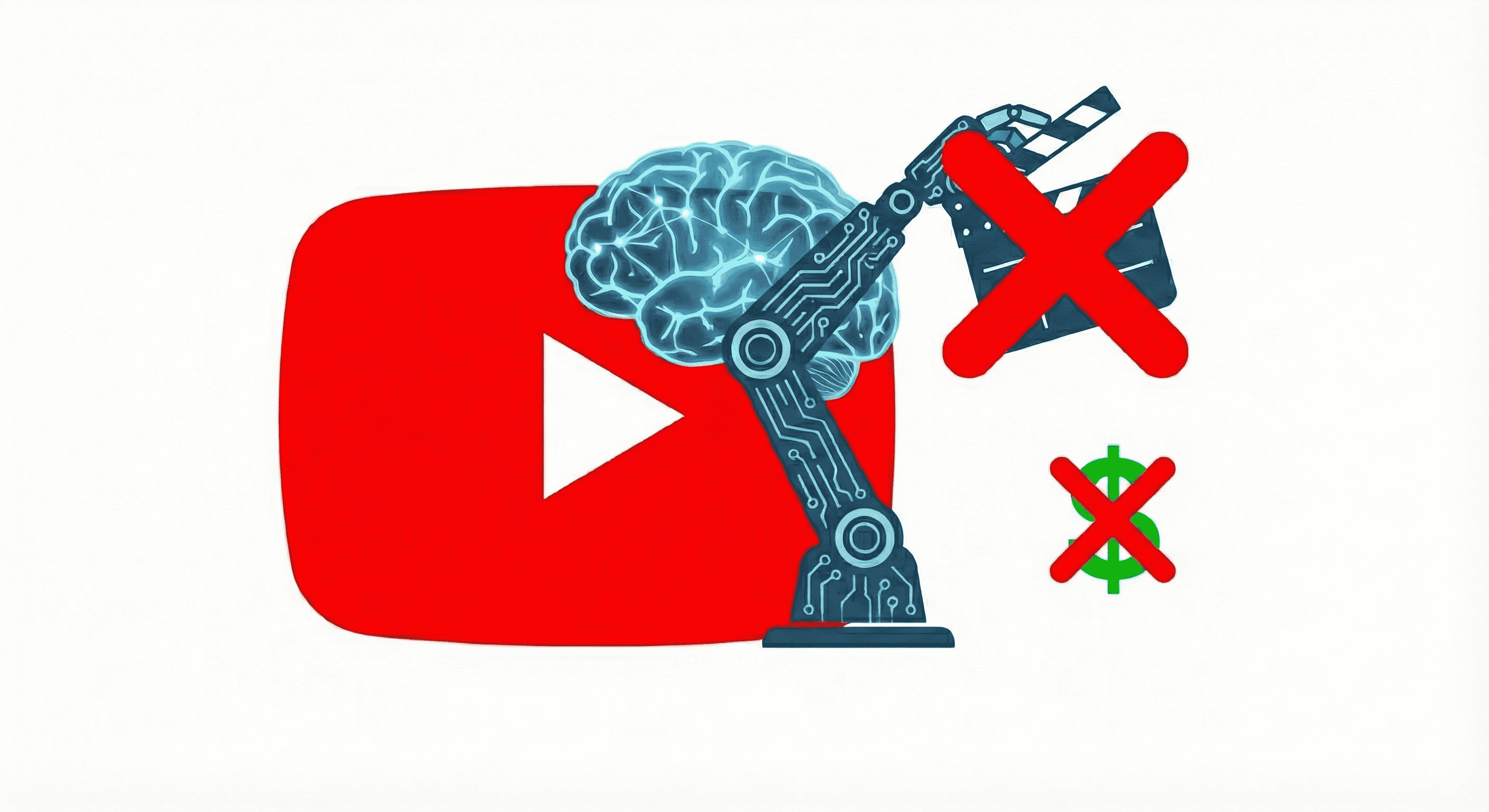YouTube Moves To Curb AI Slop, A Wakeup Call For Creators
YouTube is updating its Partner Program policies on July 15, 2025, to combat "AI slop" or low-value, mass-produced content. The new rules will focus on originality and human effort, but will not demonetize all AI-generated content, only that which lacks meaningful commentary or transformative edits.

As AI slop inundates our social media feeds and creators try to game the system by using AI to mass publish content and create attention-grabbing videos to catch eyeballs. The problem has become so widespread that Last Week Tonight host John Oliver dedicated an entire segment to it, calling AI slop “the newest iteration of spam.” Not all AI content is spam, he argued, but increasingly, all spam is AI content.
With AI slop blowing up, it seemed inevitable that publishers would step in to preserve the sanctity of their platforms, and on July 15, 2025, YouTube's Partner Program (YPP) will begin enforcing stricter rules around mass‑produced, repetitive, or inauthentic content in a bid to curb the rise of AI-generated content on YouTube. This move, welcomed by us at Contrails AI, signals a sharper focus on originality, particularly in the face of rapidly expanding AI-generated, low-effort content.
At its core, these rules are to combat AI slop, low-value, high-volume videos created with minimal human effort, often layering AI voiceovers over stock imagery or royalty-free loops because such spam‑like content erodes viewer engagement and ad performance.
YouTube stresses, however, that this isn’t a gut punch to all AI creators. Original, edited, value‑added AI content remains eligible. Thus, creators will need to focus on adding meaningful commentary or educational value to reused content.
So, creators investing in transformative edits, clear human commentary, unique narratives, or formats with deep editorial value are unaffected. Reaction videos or curated clips still qualify so long as they’re substantive and not rote.
But channels built on templated slideshows, automated top‑10 lists, AI voiceovers over stock images, or near‑duplicate formats and producers relying on AI for volume (i.e., quantity over quality) without meaningful human insight or originality are at risk. These creators risk demonetization, reduced visibility, and removal from YPP, even if they previously met threshold metrics.
In other words, the spammy history documentary channel with the AI voiceover of Stalin’s or Mao’s Wikipedia page biography, interspersed with archival footage of Moscow and Beijing, is at risk. But your favorite Lord of the Rings fandom publisher, who goes deep into the lore and themes of the book, aided by Midjourney-generated images of Middle Earth is still up for monetization.
The rest of the industry is in line with these trends. Social media platforms like TikTok and Instagram, along with video sharing site Vimeo, already have AI labels, and we will probably see them releasing policies on monetization along these lines in the future.
Although AI has democratized the creative process and significantly lowered the barrier of entry to create and publish content. The rise of AI slop has always been alarming; this, coupled with sensationalist deepfake content that intends to misinform and create false narratives, is what we’re fighting against at Contrails AI. It can’t be said that YouTube is guilty of over-regulation as well because they have not banned synthetic media completely, but merely placed guardrails so that nefarious actors looking to game the system cannot monetize these AI slop strategies. We see this move as a natural evolution and a step in a positive direction. We expect more publishers to take the lead out of this, create similar guidelines and bake AI detection tools at an infrastructure level.” Ami Kumar, Co-Founder - Contrails AI
YouTube’s July 15, 2025, policy update is a watershed moment in the platform’s evolution. It’s not about banning AI. It’s about enforcing authenticity and creative contribution in the age of generative automation.
Follow us on LinkedIn for more articles from the universe of Trust & Safety
Visit us to see how we are building AI for Trust & Safety
References
Did you enjoy this post?